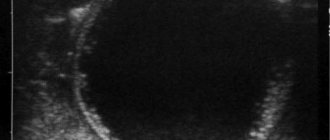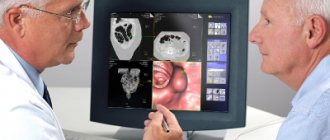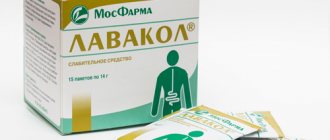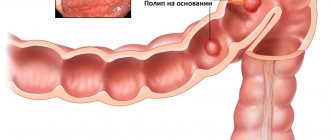The use of butyric acid for radiation injuries of the intestine
One of the promising methods of drug prevention for maintaining remission in patients with UC is the use of the drug butyric acid and inulin, Zakofalka, as part of complex therapy (for example, in combination with mesalazine).
A decrease in the level of butyric acid in inflammatory bowel diseases (IBD) has been found in many studies, which served as the basis for studying the effectiveness of its use in IBD. One of the reasons for the decrease in butyric acid in patients with IBD is a significant decrease in the number of microbes that synthesize this metabolite. The state of mucosal and fecal microflora associated with it was studied in patients with Crohn's disease, ulcerative colitis and in healthy people. There is a sharp decrease in bacteria that synthesize butyric acid (in particular Faecalibacterium prausnitzii) both in the feces and in the colon mucosa in patients with IBD, compared with healthy individuals.
Application of Zakofalk as a means of enhancing primary therapy for the prevention of exacerbation of ulcerative colitis
justified by the decrease in the concentration of this metabolite in these patients and the main effects of butyric acid on the colon mucosa:
1. Anti-atrophic effect - restoration of trophism of the colon mucosa.
2. Anti-inflammatory effect. Restoring the barrier functions of the colon.
3. Regulation of the processes of normal maturation and development of cells in the colon mucosa.
4. Antidiarrheal effect – regulation of water and electrolyte balance in the colon.
5. Prebiotic effect – creating a favorable environment for the growth of your own beneficial microflora.
The effectiveness of Zakofalk has been confirmed in a large number of studies. Thus, in a large study conducted on the basis of 19 gastrocenters that are part of the IBD study group in Italy, patients with mild to moderate forms of ulcerative colitis (number of patients = 196), who did not achieve a satisfactory response to standard mesalazine therapy within 6 months Zakofalk was added 1 tablet 3 times a day. After 6 months, patients receiving a combination of mesalazine and Zakofalk showed a statistically significant decrease in the frequency of bowel movements, blood and mucus, as well as a reduction in the clinical activity index - 86% were in clinical remission (had no symptoms of the disease).
To prevent exacerbation (maintain remission) of ulcerative colitis, Zakofalk in combination with the main therapy (mesalazine) is used 1 t 3-4 times a day, the minimum course is 3-6 months, maintenance therapy is possible 1 t 2 times a day for a long time.
Reasons for the development of enteritis
Enteritis can be a consequence of acute intestinal infection, poisoning with toxic substances (for example, arsenic) or poisonous products (for example, mushrooms), abuse of fatty foods or alcohol, food or drug allergies, infection with helminths, etc.
Enteritis can also be caused by an enterovirus infection. Enterovirus infection can be called a relatively new disease, since enteroviruses (there are more than 60 types) began to be isolated only in the middle of the 20th century. Children under 10 years of age are most susceptible to enterovirus infection. The transmission of the virus is carried out both by airborne droplets, food, and household contact; the incubation period lasts from 1 to 10 days, so in a children's institution almost 2/3 of the team becomes infected with enterovirus infection. Characteristic symptoms of enterovirus infection are a sudden increase in body temperature to 38-40°, weakness, abdominal pain, flatulence, nausea and vomiting, loss of appetite, coating on the tongue, sore throat, etc. However, the disease can be asymptomatic. Unfortunately, enteroviruses can often cause various serious diseases in a patient, one of which is enteritis.
Also, enteritis is often associated with other diseases of the gastrointestinal tract and occurs after surgical interventions on the organs of the digestive system.
Among the factors contributing to the development of enteritis are smoking, atherosclerosis, renal failure, a tendency to allergies, autoimmune diseases, etc.
Types of enteritis
Enteritis is usually classified as:
- due to development (infectious, toxic, drug, parasitic, postoperative, secondary, etc.);
- by localization (inflammation of the jejunum - jeunitis; inflammation of the ileum - ileitis; total enteritis, if the inflammatory process has affected all sections);
- by the nature of morphological changes (without atrophy and with atrophy of varying degrees);
- by severity (mild, moderate, severe);
- In addition, enteritis has acute and chronic forms.
With enteritis, there can be serious fluid loss (1 liter per hour)! Be sure to consult a gastroenterologist at the first symptoms of malaise - it is important to prevent dehydration and other unpleasant consequences!
Enteritis
Acute form
Acute enteritis is treated in a hospital.
Acute toxic enteritis is treated in gastroenterology departments; infectious enteritis is an indication for hospitalization in an infectious disease ward. Patients are prescribed bed rest, dietary nutrition (mechanically and chemically gentle food, limiting the content of carbohydrates and fats), drinking plenty of fluids (if necessary, hydration therapy measures), symptomatic and restorative treatment. With the development of severe dysbacteriosis, drug correction of the intestinal flora is carried out, and diarrhea is stopped with astringents. In case of protein metabolism disturbance, polypeptide solutions are administered. Treatment of acute enteritis usually takes about a week; discharge from the hospital is carried out after acute symptoms subside.
Patients with severe enteritis, as well as enteritis of toxic origin (the further course of which is difficult to determine in the first hours of the disease) must be hospitalized. Patients with infectious enteritis are hospitalized in infectious diseases hospitals.
Chronic form
It is advisable to treat exacerbation of chronic enteritis in a hospital setting. Patients are prescribed bed rest and dietary nutrition (diet No. 4). During the acute period, food should be as rich in proteins as possible; it is better to limit fats and carbohydrates. It is necessary to avoid rough foods, spicy, sour foods, and foods that can damage the mucous membrane of the digestive tract. Avoid foods containing large amounts of fiber and milk. The amount of fats and carbohydrates is gradually increased.
During the period of remission, a balanced diet is recommended, containing all the necessary substances, vitamins and minerals in sufficient quantities. Correction of digestive enzyme deficiency is carried out using enzyme preparations: pancreatin, pancitrate, festal. Stimulate absorption with drugs containing nitrates, preferably long-acting. Protective agents (essential phospholipids, milk thistle fruit extract) help restore the functionality of the cell membranes of the intestinal epithelium.
Loperamide is prescribed to suppress excessive propulsive bowel movements. For patients with severe diarrhea, astringents, enveloping and absorbent drugs, and antiseptics are recommended. Herbal medicine can be used for these purposes (decoctions of chamomile, sage, St. John's wort, bird cherry and blueberry fruits, alder cones).
Dysbacteriosis is corrected with the help of probiotics and eubiotics. Intravenous infusion of amino acid solutions is prescribed for severe absorption disorders with severe protein deficiency. If symptoms of enteritis develop against the background of small intestinal tumors (polyps, diverticula), their surgical removal is necessary.








